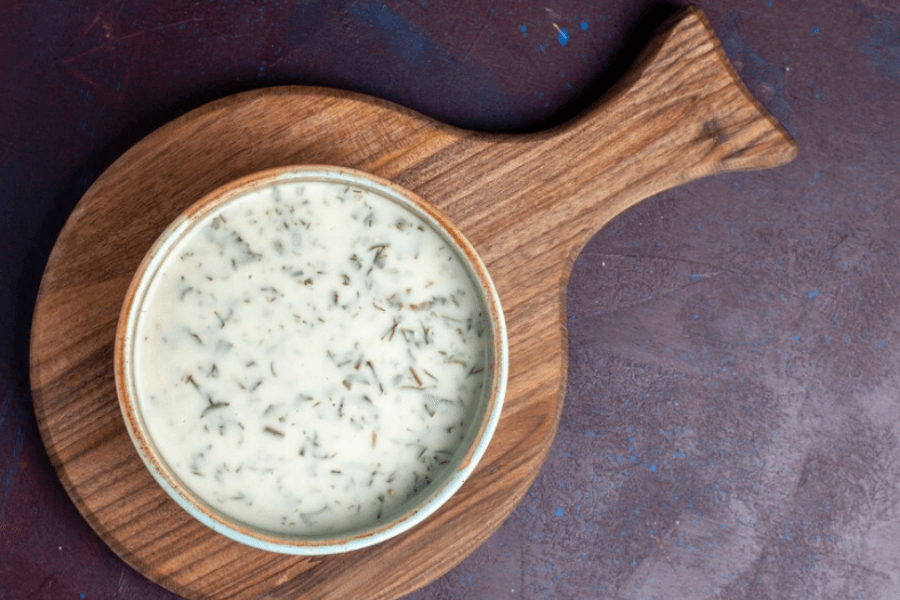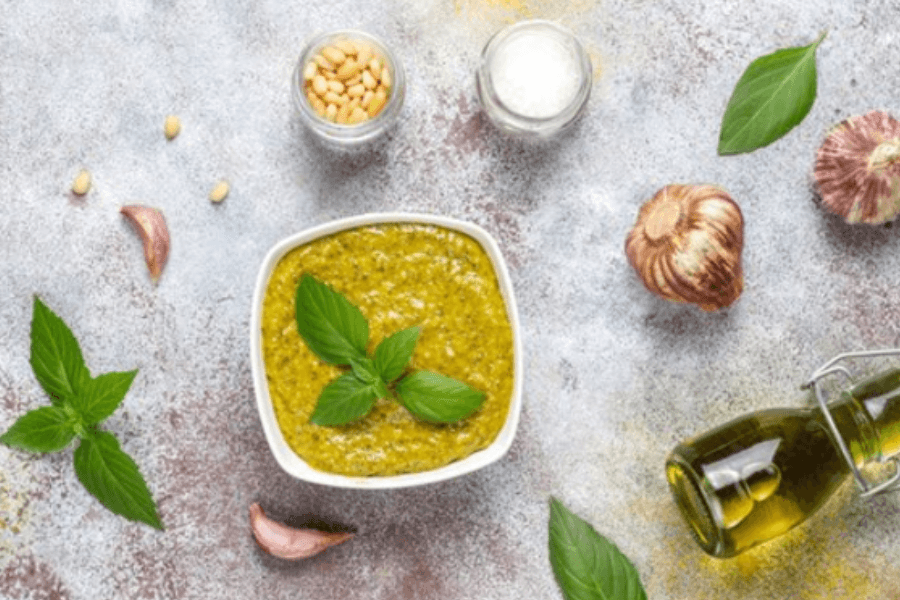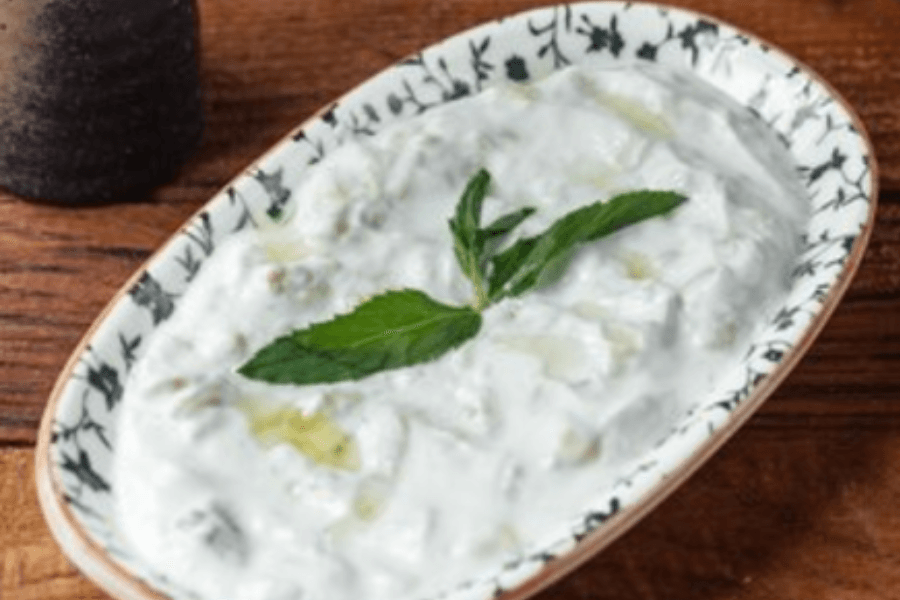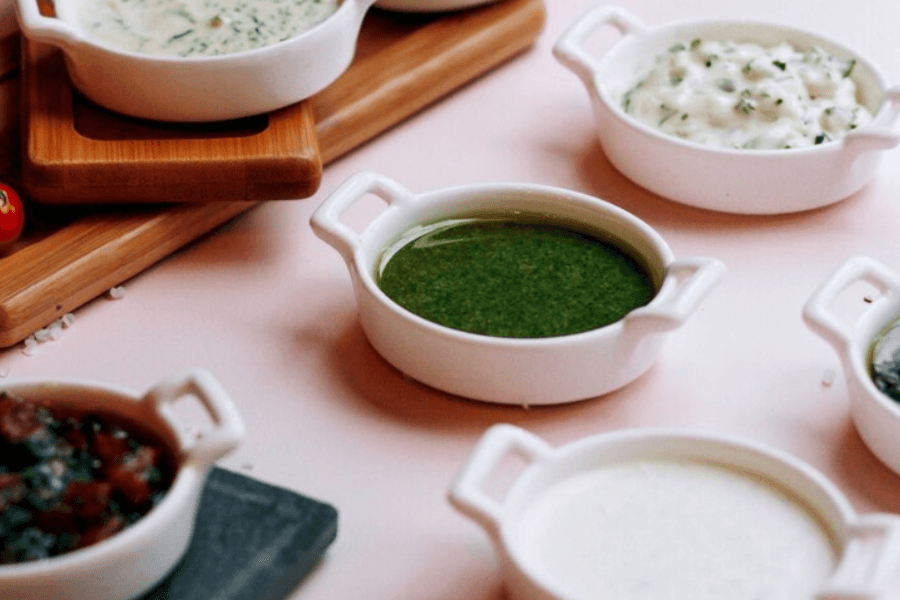Traditional dressing is typically made from a combination of ingredients that vary based on cultural and regional preferences. However, in many cuisines, traditional dressings are prepared using a blend of these common elements:
- Base Ingredient:
- Oil: Such as olive oil, sesame oil, or vegetable oil, which acts as the foundation.
- Dairy: Sometimes yogurt, buttermilk, or sour cream is used for a creamy texture.
- Acidic Component:
- Vinegar: Like balsamic, apple cider, or rice vinegar.
- Citrus Juice: Lemon or lime juice for tanginess.
- Flavor Enhancers:
- Herbs and Spices: Fresh or dried herbs like parsley, dill, oregano, and spices like garlic powder, paprika, or pepper.
- Sweeteners: Honey, sugar, or maple syrup for a touch of sweetness.
- Salt: To balance flavors.
- Thickeners:
- Egg Yolks or Mustard: Common in emulsified dressings like mayonnaise.
- Flour or Cornstarch: Occasionally used in cooked dressings.
- Additional Flavors:
- Garlic and Onion: Minced, powdered, or roasted for depth.
- Fermented Ingredients: Like soy sauce or Worcestershire sauce for umami notes.
- Optional Add-ins:
- Crumbled cheese, nuts, or seeds for extra texture or flavor.
Example:
For a vinaigrette, a simple ratio of 3 parts oil to 1 part vinegar is mixed, with mustard, garlic, and herbs added for flavor. A ranch dressing, by contrast, uses a base of buttermilk, mayonnaise, and sour cream blended with herbs like dill and chives.
The exact combination depends on the type of dressing and the cultural influences behind its recipe.
Table of Contents
1. Classic Vinaigrette Dressing
- Ingredients:
- Olive oil (base)
- Vinegar (balsamic, red wine, or white wine vinegar)
- Dijon mustard or honey for emulsification
- Garlic, salt, and pepper for seasoning
- Optional: Fresh herbs like thyme, basil, or parsley
- Preparation: Combine the oil and vinegar in a 3:1 ratio, then whisk in mustard or honey until smooth. Add seasonings and herbs to taste.
- Uses: Ideal for green salads, roasted vegetables, or marinating meats.
2. Creamy Ranch Dressing
- Ingredients:
- Buttermilk or sour cream (base)
- Mayonnaise (for creaminess)
- Garlic powder, onion powder, and dried herbs (dill, chives, parsley)
- Lemon juice or vinegar for tanginess
- Salt and pepper for seasoning
- Preparation: Mix all ingredients until smooth and refrigerate to allow flavors to meld.
- Uses: Commonly used as a dip for vegetables, chips, or wings and as a salad dressing.
3. Traditional Caesar Dressing

- Ingredients:
- Olive oil (base)
- Egg yolks (to emulsify)
- Anchovies (for a salty, umami flavor)
- Garlic, lemon juice, Dijon mustard, and grated Parmesan cheese
- Salt and pepper for seasoning
- Preparation: Blend the anchovies, garlic, lemon juice, and mustard into a smooth paste. Slowly whisk in olive oil and stir in Parmesan cheese.
- Uses: Perfect for Caesar salads or as a marinade for grilled meats.
4. Japanese Sesame Dressing (Goma Dressing)
- Ingredients:
- Sesame oil (base)
- Soy sauce (for saltiness)
- Rice vinegar or lemon juice (for acidity)
- Toasted sesame seeds, sugar, and miso paste
- Optional: Ginger and garlic for added flavor
- Preparation: Blend toasted sesame seeds into a paste, then mix with the liquid ingredients for a nutty and tangy dressing.
- Uses: Pairs well with salads, noodles, or steamed vegetables.
5. Italian Dressing

- Ingredients:
- Olive oil (base)
- Red wine vinegar (for tang)
- Garlic, dried oregano, basil, and parsley
- Grated Parmesan cheese (optional)
- Sugar or honey to balance acidity
- Preparation: Whisk the oil and vinegar together, then add seasonings and cheese. Let the mixture sit for a while to enhance the flavors.
- Uses: Great for pasta salads, green salads, or as a marinade for chicken.
6. Middle Eastern Tahini Dressing
- Ingredients:
- Tahini (sesame seed paste as the base)
- Lemon juice (for acidity)
- Garlic and water (to adjust thickness)
- Salt and a drizzle of olive oil
- Preparation: Whisk tahini with lemon juice and gradually add water until the desired consistency is reached. Season with salt and garlic.
- Uses: Often used as a dip for falafel, drizzled over roasted vegetables, or served with pita bread.
7. French Dressing
- Ingredients:
- Oil (base)
- Vinegar (apple cider or white vinegar)
- Ketchup (for sweetness and color)
- Paprika, garlic powder, and sugar
- Preparation: Blend oil, vinegar, and ketchup, then season with paprika and sugar to taste.
- Uses: Typically used on mixed greens or as a topping for sandwiches.
8. Indian Raita

- Ingredients:
- Yogurt (base)
- Cucumber (grated or diced)
- Spices: Cumin powder, coriander, and sometimes mint
- Salt and chili powder (optional)
- Preparation: Combine all ingredients in a bowl and mix well.
- Uses: Served as a cooling side dish or dressing for spiced dishes like biryani.
Common Variations Across Cultures
- Mexican Salsa Verde Dressing: A tangy dressing made with blended tomatillos, lime juice, garlic, and cilantro.
- Greek Dressing: Combines olive oil, lemon juice, oregano, and feta cheese for a flavorful punch.
- Thai Peanut Dressing: A rich, nutty dressing made with peanut butter, soy sauce, lime juice, and chili paste.
Tips for Making Traditional Dressing at Home
- Use Fresh Ingredients: The quality of oils, vinegars, and herbs can make a significant difference.
- Adjust to Taste: Many traditional dressings can be tailored with more acidity, sweetness, or spice.
- Experiment with Textures: Adding crushed nuts, grated cheese, or seeds can add unique textures.
- Balance Flavors: Aim for a mix of salty, sweet, sour, and savory for a well-rounded dressing.
How Traditional Dressings Enhance Dishes
Dressings are more than just flavor boosters—they serve multiple purposes in cuisine, contributing to texture, taste, appearance, and even nutrition. Here’s a closer look at their impact:
1. Adding Flavor Complexity
Dressings act as the final touch, layering flavors into the dish. By incorporating sweet, sour, salty, and umami components, dressings enhance the natural taste of ingredients. For instance:
- A vinaigrette with honey and mustard adds sweetness and tanginess to a fresh salad.
- Soy-based sesame dressings bring umami depth to roasted vegetables or cold noodle salads.
2. Textural Contrast
The consistency of a dressing plays a critical role in creating a textural balance:
- Creamy dressings like ranch or Caesar coat ingredients evenly, offering richness.
- Lighter dressings, such as a lime-cilantro drizzle, provide a refreshing counterpoint to crunchy or fried items.
3. Visual Appeal
Dressings can dramatically improve the appearance of dishes:
- Brightly colored dressings, like French dressing or salsa verde, provide vibrant contrasts.
- Garnishing a salad or main course with a drizzle of dressing can make it look more appetizing and professional.
4. Nutritional Enhancements
Many traditional dressings include healthy oils, fermented products, and herbs, which can boost the nutritional value of meals:
- Olive oil-based vinaigrettes contain heart-healthy fats.
- Dressings made with yogurt, like raita, provide probiotics and protein.
- Nut-based dressings, such as Thai peanut sauce, deliver essential vitamins and minerals.
5. Balancing Heavy or Spicy Foods
In cuisines worldwide, dressings serve to counterbalance rich or spicy dishes:
- Raita or tzatziki is used to cool spicy Indian and Mediterranean meals.
- Lemon or vinegar-based dressings cut through the heaviness of fried or greasy foods.
Homemade vs. Store-Bought Dressings
While store-bought dressings are convenient, homemade versions have distinct advantages:
Advantages of Homemade Dressings
- Freshness: Homemade dressings are free of preservatives and artificial additives.
- Customization: Adjust the ingredients to suit dietary needs (e.g., gluten-free, low-sugar).
- Cost Efficiency: Making dressings at home is usually more economical than buying premium bottled varieties.
- Flavor Control: You can experiment with herbs, spices, and oils to create personalized flavors.
Challenges of Store-Bought Dressings
- High Sodium and Sugar: Many packaged dressings are loaded with unhealthy levels of salt and sugar.
- Artificial Ingredients: Store-bought options often contain preservatives, stabilizers, and synthetic flavors.
- Limited Freshness: They lack the vibrant flavor of fresh ingredients found in homemade dressings.
How to Store Traditional Dressings
Proper storage ensures dressings remain fresh and flavorful. Here are some key tips:
- Refrigeration:
- Creamy dressings made with dairy, eggs, or fresh herbs must be refrigerated immediately and consumed within 3–7 days.
- Oil-based vinaigrettes can last up to 2 weeks if stored in an airtight container.
- Shake Before Use: Ingredients in homemade dressings often separate. Shake or whisk before serving to redistribute flavors evenly.
- Use Airtight Containers: Glass jars or bottles with tight lids prevent air from spoiling the dressing.
- Label and Date: Mark containers with the preparation date to keep track of freshness.
For more easy and delicious recipe, check out this: Secret Ingredients That Make Italian Beef Unforgettable or What Is Italian Beef Sauce Made Of? Ingredients, Recipe & Tips
Frequently Asked Questions About Traditional Dressings
1. Can I make traditional dressings ahead of time?
Yes, many dressings, especially vinaigrettes, can be prepared in advance. Store them in the refrigerator and give them a good shake before using.
2. How do I thicken a dressing that’s too runny?
You can use ingredients like Greek yogurt, tahini, mayonnaise, or even a small amount of cornstarch or flour (for cooked dressings) to thicken it.
3. How do I reduce the acidity in a dressing?
If a dressing tastes too tangy, balance it with a sweetener like honey, maple syrup, or a pinch of sugar. You can also dilute it with more oil or cream.
4. Can I make dressings without oil?
Yes, oil-free dressings are possible. Ingredients like pureed avocado, silken tofu, or yogurt can replace oil as the base.
5. How do I make vegan-friendly dressings?
Replace dairy with plant-based alternatives like almond milk yogurt or coconut cream, and swap honey with agave syrup or maple syrup.
6. Why does my dressing taste bitter?
Bitterness can come from using low-quality oils or over-mixing olive oil in a blender. Opt for fresh, high-quality oils and mix by hand.
The base of traditional dressing is usually stale bread or cornbread. These absorb flavors from other ingredients, creating a hearty texture.: Classic Chicken Dressing Recipe
Fresh or dried herbs like sage, thyme, and parsley, along with salt and pepper, bring the dish to life: What Is Traditional Dressing Made Of?
Some variations include cooked sausage, diced chicken, or even oysters for added richness: Recipe Chicko Chicken
Conclusion: The Art of Traditional Dressing
Traditional dressings are a cornerstone of global culinary traditions, offering a versatile way to elevate the flavor, texture, and visual appeal of dishes. Whether it’s a simple vinaigrette, a creamy ranch, or a bold sesame-soy dressing, each variety has its unique charm and utility. By making dressings at home, you can explore endless flavor combinations, customize them to suit your needs, and enjoy fresher, healthier options compared to store-bought alternatives.

